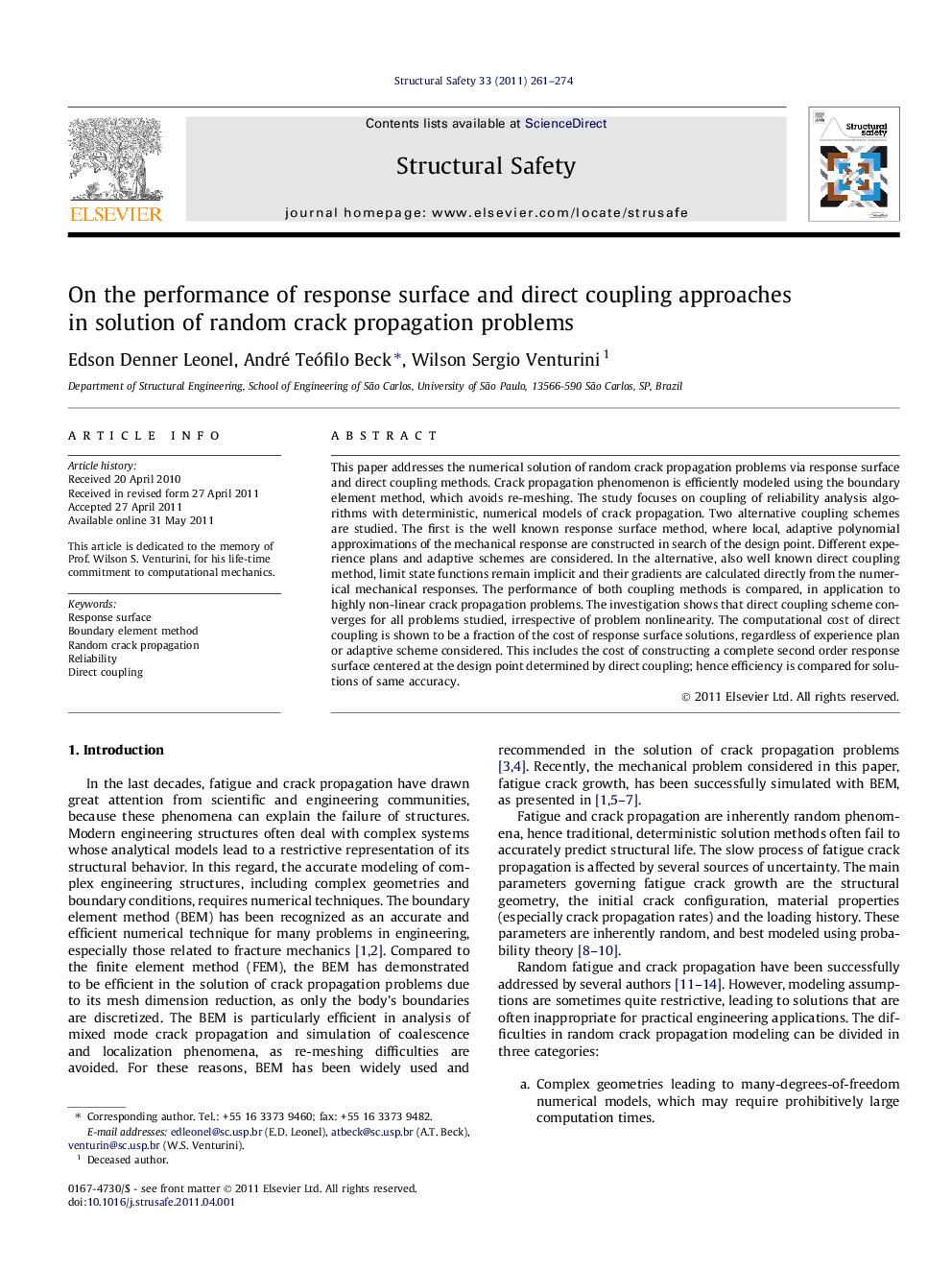| Article ID | Journal | Published Year | Pages | File Type |
|---|---|---|---|---|
| 307699 | Structural Safety | 2011 | 14 Pages |
This paper addresses the numerical solution of random crack propagation problems via response surface and direct coupling methods. Crack propagation phenomenon is efficiently modeled using the boundary element method, which avoids re-meshing. The study focuses on coupling of reliability analysis algorithms with deterministic, numerical models of crack propagation. Two alternative coupling schemes are studied. The first is the well known response surface method, where local, adaptive polynomial approximations of the mechanical response are constructed in search of the design point. Different experience plans and adaptive schemes are considered. In the alternative, also well known direct coupling method, limit state functions remain implicit and their gradients are calculated directly from the numerical mechanical responses. The performance of both coupling methods is compared, in application to highly non-linear crack propagation problems. The investigation shows that direct coupling scheme converges for all problems studied, irrespective of problem nonlinearity. The computational cost of direct coupling is shown to be a fraction of the cost of response surface solutions, regardless of experience plan or adaptive scheme considered. This includes the cost of constructing a complete second order response surface centered at the design point determined by direct coupling; hence efficiency is compared for solutions of same accuracy.
► Solution involving BEM, crack propagation and reliability algorithms is developed. ► Direct coupling and response surface approaches are compared ► Direct coupling is shown to be more efficient than response surface. ► Direct coupling is stable for highly non-linear random crack propagation problems.
